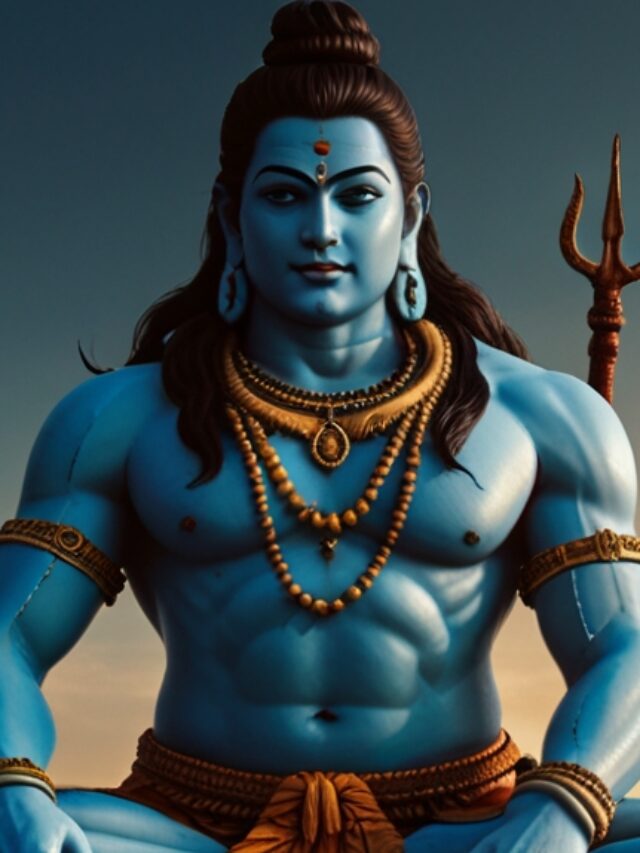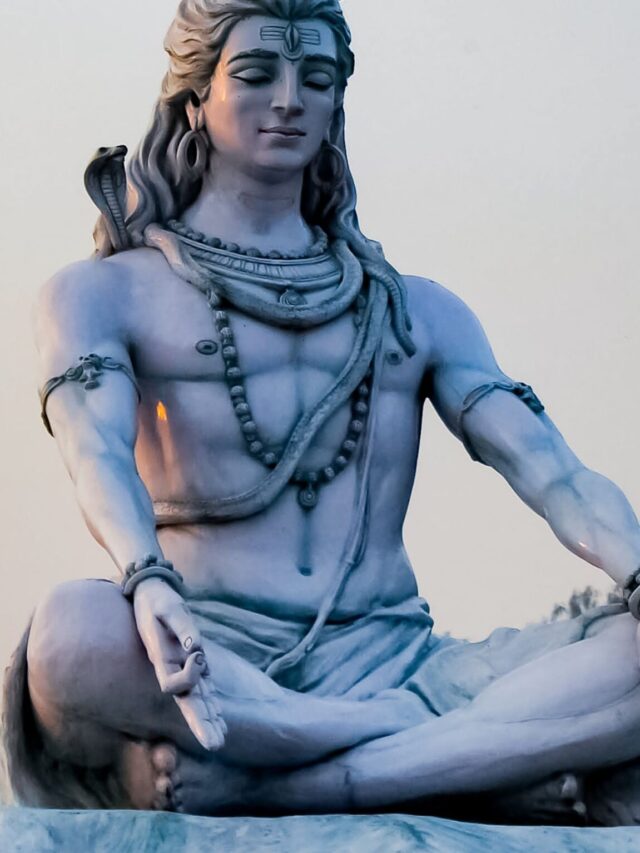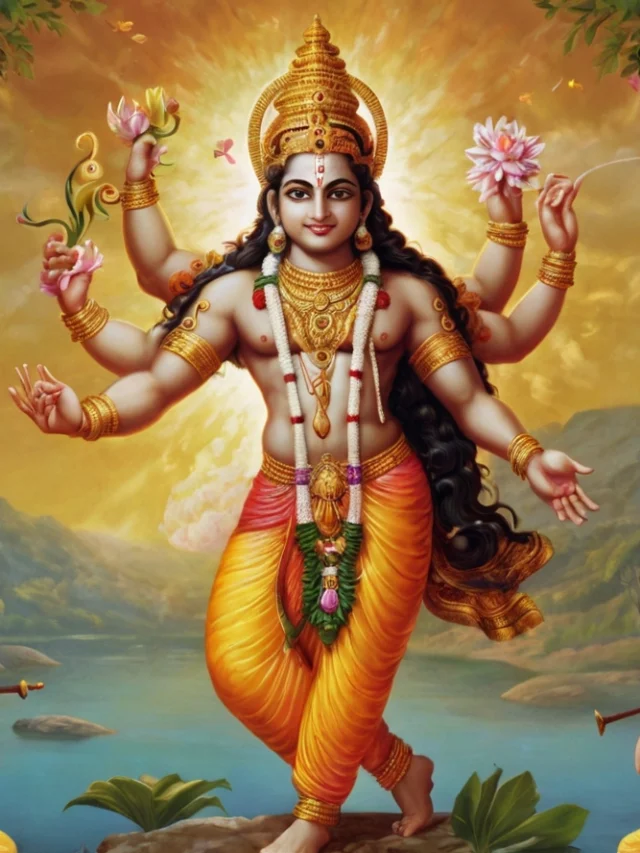Enemy of Krishna and the Pandavas-Jarasandha.Jarasandha, the mighty king of Magadha, stands as an insurmountable obstacle in the Pandavas’ path to rightful kingship. His wrath against Krishna fuels an epic saga of vengeance and war. Discover the legend of Jarasandha and his role in the Mahabharata.
Rajasuya Yagna
The Rajasuya Yagna of Yudhishthira in the Mahabharata is a pivotal event that marks the escalation of the rivalry between the Pandavas and the Kauravas. Here’s a breakdown of its significance:
What is a Rajasuya Yagna?
Literally meaning “king’s sacrifice,” the Rajasuya Yagna was a sacred ceremony performed by ancient Indian kings to declare themselves the emperor or “Chakravarti.” It wasn’t just a ritual; it was a display of power. The king performing the Yagna would subjugate other kingdoms, either through conquest or alliances, essentially proving their dominance.
Why Did Yudhishthira Perform the Rajasuya Yagna?
The idea was first suggested by the sage Narada. Yudhishthira, known for his righteousness, initially hesitated as it involved war. But Krishna, his friend and advisor, convinced him that the Yagna would establish dharma (righteousness) and peace throughout the land. Yudhishthira, desiring prosperity for his people, agreed.
Preparation and Conflict
The Yagna required immense wealth and resources. Arjuna, the mighty Pandava archer, along with his brothers, embarked on conquests, bringing many kingdoms under Yudhishthira’s control. This act of subjugation, however, stoked jealousy and resentment, particularly in Duryodhana, the Kaurava prince. Here, the seeds of future conflict were sown.
The Yagna and its Aftermath
The Rajasuya Yagna itself was a grand spectacle, attended by kings and dignitaries from all over. Yudhishthira’s supremacy was acknowledged, but the underlying tension remained. Duryodhana, humiliated by Yudhishthira’s newfound power, found the Pandavas’ prosperity unbearable. This envy is often seen as a key factor leading to the Kurukshetra war, the epic battle at the heart of the Mahabharata.
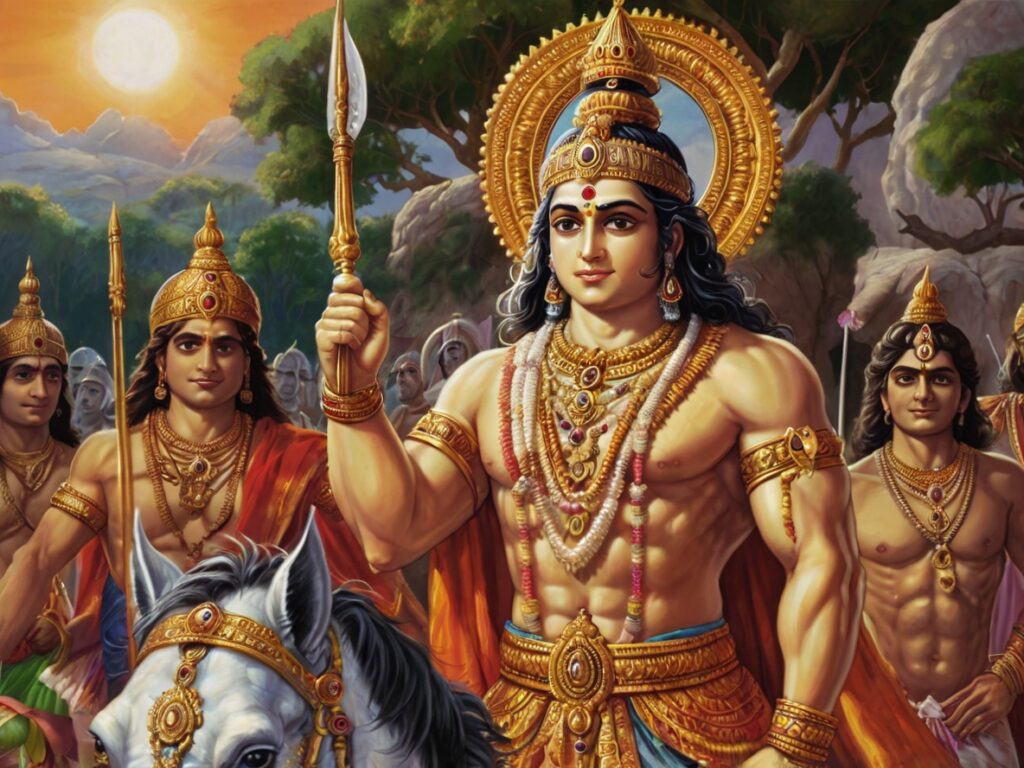
Jarasandha: The Powerful Antagonist of the Pandavas
Jarasandha is a significant character in the Indian epic, the Mahabharata. He is depicted as a powerful and formidable king of Magadha, known for his might and his enmity with the Yadava clan, particularly with Krishna. His story is interwoven with themes of power, revenge, and the complex dynamics of kingship.
Birth and Early Life
Jarasandha’s birth is marked by a unique and miraculous event. His father, King Brihadratha of Magadha, was childless and deeply desired an heir. Seeking blessings, he approached a sage who granted him a boon and gave him a fruit, instructing him to share it with his two wives. Both queens ate the fruit and subsequently gave birth to two halves of a child. Horrified, the king ordered the halves to be thrown away.
However, a rakshasi (demoness) named Jara found the halves and magically fused them together, bringing the child to life. Thus, he was named Jarasandha, meaning “joined by Jara.” The child grew up to be a mighty warrior with immense strength and prowess.
Kingship and Ambitions
Jarasandha ascended the throne of Magadha and became a powerful king. He harbored ambitions of establishing his supremacy over all of India. He formed alliances with several other powerful kings and waged wars against many others. His primary ambition was to perform a Rajasuya Yagna, for which he needed to subdue 100 kings and sacrifice them. He managed to imprison several kings for this purpose.
Enmity with Krishna
Jarasandha’s enmity with Krishna and the Yadavas is a pivotal aspect of his story. When Kamsa, the king of Mathura and Krishna’s maternal uncle, was killed by Krishna, Jarasandha, who was Kamsa’s father-in-law, vowed revenge. He attacked Mathura 17 times, but each time Krishna and Balarama managed to defend the city. Eventually, Krishna decided to move the Yadava clan to the city of Dwarka, which he built in the middle of the sea, to avoid further attacks.
Death of Jarasandha
The Pandavas, after establishing their kingdom in Indraprastha, desired to perform the Rajasuya Yagna. Krishna advised them that Jarasandha’s defeat was essential for this purpose, as his power and influence were a major obstacle. However, defeating Jarasandha in a direct battle was a daunting task due to his strength and formidable army.
Krishna, along with Bhima and Arjuna, devised a plan to challenge Jarasandha to a duel. They disguised themselves as Brahmins and visited Jarasandha’s court. Jarasandha, bound by the duties of hospitality and honor, agreed to their challenge. Krishna then revealed their true identities and demanded a duel.
Jarasandha chose to fight Bhima in a wrestling match. The duel lasted for 14 days, showcasing both warriors’ incredible strength and endurance. Ultimately, Krishna subtly indicated to Bhima the way to defeat Jarasandha by tearing a leaf apart. Bhima understood the hint and tore Jarasandha’s body into two halves, throwing them in opposite directions, ensuring they could not rejoin.
Legacy
Jarasandha’s death was a turning point in the Mahabharata. It not only removed a significant threat to the Pandavas but also allowed them to proceed with their Rajasuya Yagna, consolidating their power and influence.
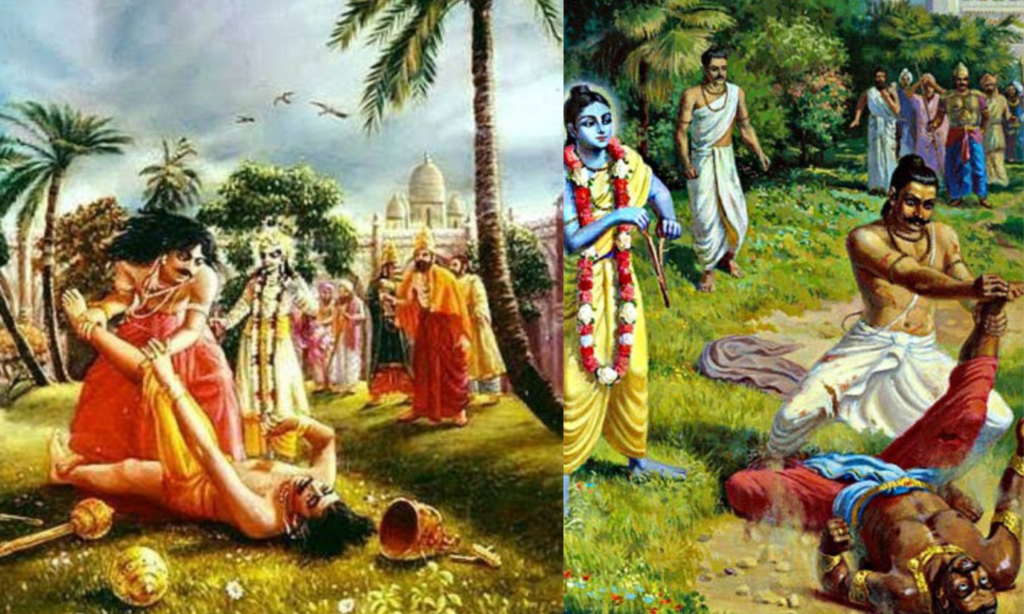
The Epic Duel: Bhima vs. Jarasandha
The fight between Bhima and Jarasandha is one of the most intense and dramatic duels in the Mahabharata. It is a classic tale of strength, strategy, and perseverance, showcasing Bhima’s physical prowess and Krishna’s strategic brilliance.
Context
The fight occurs in the context of Yudhishthira’s desire to perform the Rajasuya Yagna, which requires the subjugation of powerful kings, including Jarasandha, the formidable ruler of Magadha. Jarasandha, having imprisoned several kings for his own yagna, was a significant obstacle. Krishna, aware of Jarasandha’s might and the importance of his defeat, suggests a strategy to confront him directly.
The Plan
Krishna, Bhima, and Arjuna set out for Magadha disguised as Brahmins. Upon arriving at Jarasandha’s court, they reveal their true identities and challenge him to a duel. Jarasandha, bound by the code of kshatriya honor and the rules of hospitality, accepts their challenge. He chooses Bhima as his opponent, recognizing him as the strongest among the three.
The Duel
The duel between Bhima and Jarasandha is an epic test of strength and endurance. Here are the key details of the fight:
Start of the Fight: The duel begins with the two warriors grappling and testing each other’s strength. Both Bhima and Jarasandha are known for their immense physical power, making the fight evenly matched at the start.
Duration: The fight continues for 14 days without any clear victor. They engage in hand-to-hand combat, wrestling, and hurling each other with tremendous force. The battle is relentless, with neither warrior willing to give up.
Endurance and Skill: Both Bhima and Jarasandha display incredible endurance and combat skills. The fight is not just a test of brute strength but also of strategic thinking and resilience.
Krishna’s Hint: On the 14th day, as the battle rages on, Krishna realizes that Bhima needs a hint to defeat Jarasandha. Krishna picks up a twig and splits it into two, then throws the halves in opposite directions. Bhima understands the subtle message.
Final Move: Bhima, drawing upon Krishna’s hint, overpowers Jarasandha, lifts him up, and tears him into two halves. To ensure that Jarasandha does not come back to life (as his halves could rejoin), Bhima throws the halves in opposite directions, preventing them from reuniting.
Significance
The fight between Bhima and Jarasandha is significant for several reasons:
- Demonstration of Strength: The duel highlights Bhima’s incredible physical strength and endurance, establishing him as one of the greatest warriors in the Mahabharata.
- Strategic Victory: Krishna’s strategic insight plays a crucial role in the victory, emphasizing the importance of wisdom and strategy in addition to physical prowess.
- Political Impact: Jarasandha’s defeat clears the path for Yudhishthira’s Rajasuya Yagna, consolidating the Pandavas’ power and paving the way for their dominance.
- Moral and Ethical Lessons: The fight also reflects the themes of dharma (righteousness) and the duty of a kshatriya to accept challenges and uphold their honor.
Aftermath
With Jarasandha’s death, the imprisoned kings are released, and they pledge their allegiance to Yudhishthira. This victory significantly boosts the Pandavas’ reputation and influence, allowing them to successfully perform the Rajasuya Yagna. It also eliminates a major threat to Krishna and the Yadavas, ensuring peace and stability in their region.
In conclusion, the fight between Bhima and Jarasandha is a pivotal moment in the Mahabharata, blending themes of strength, strategy, and righteousness. It exemplifies the heroic qualities of Bhima and the strategic acumen of Krishna, highlighting the complex interplay of physical might and intellectual prowess in the epic.

